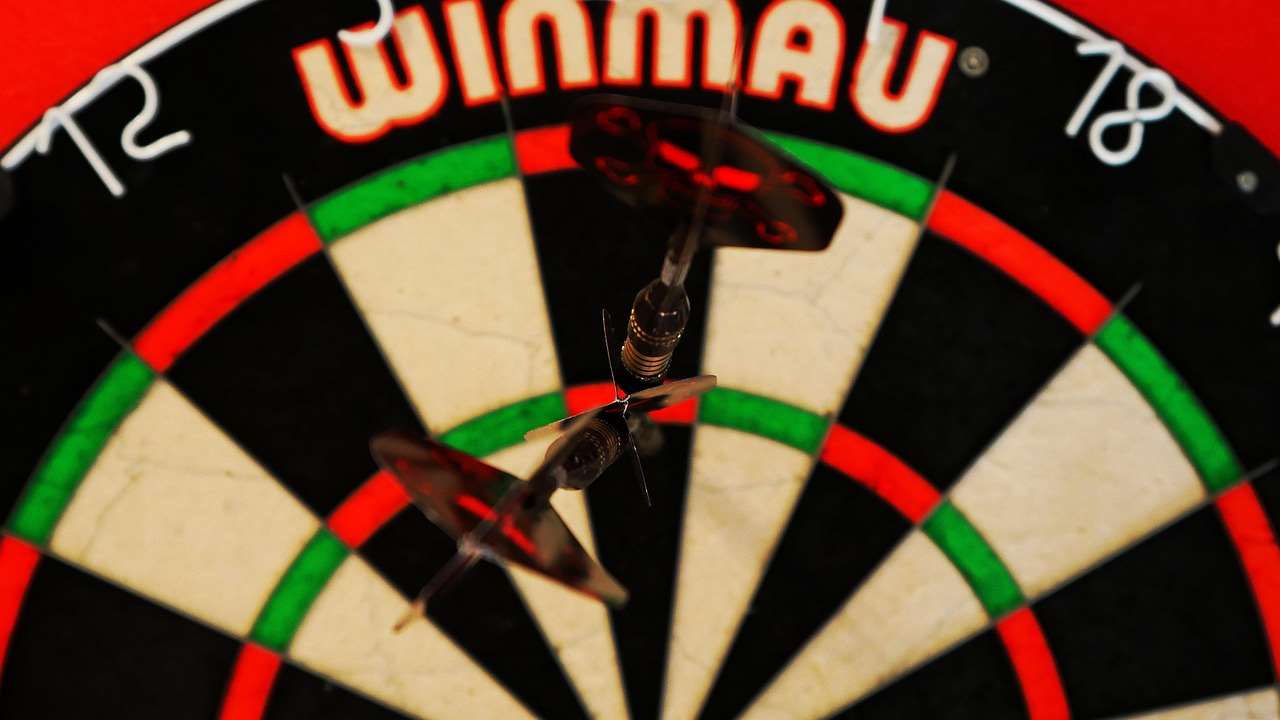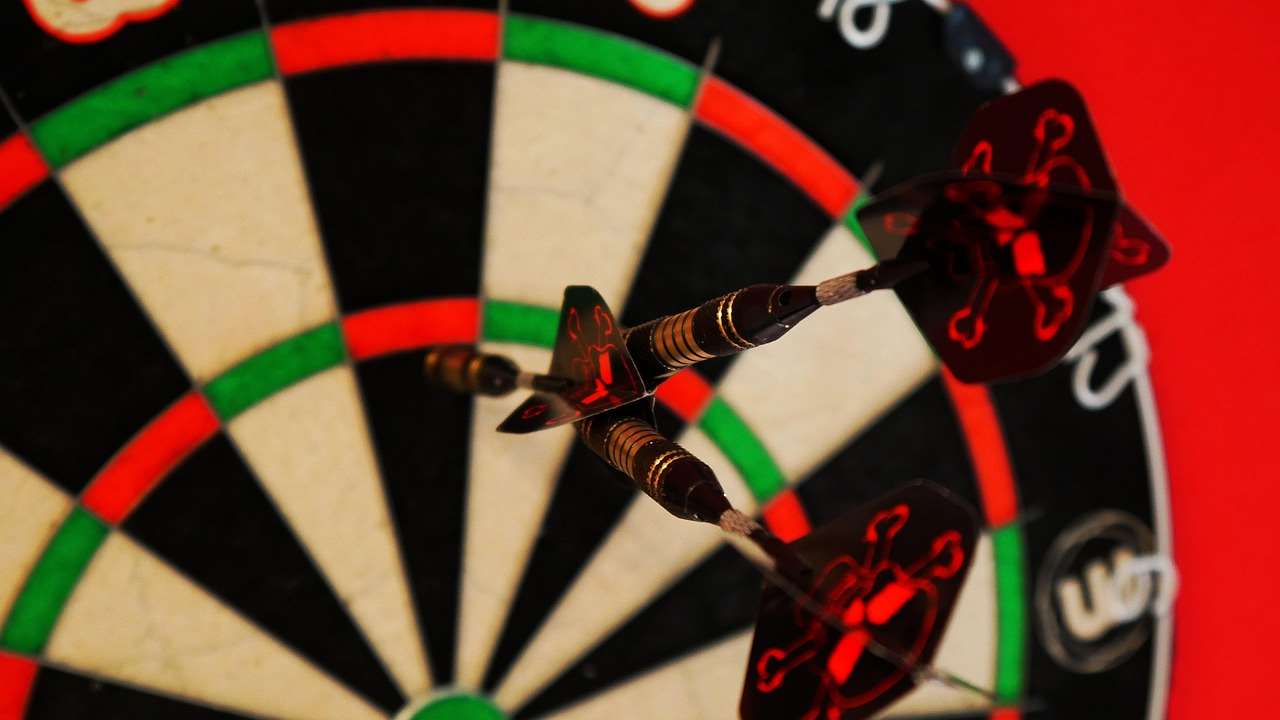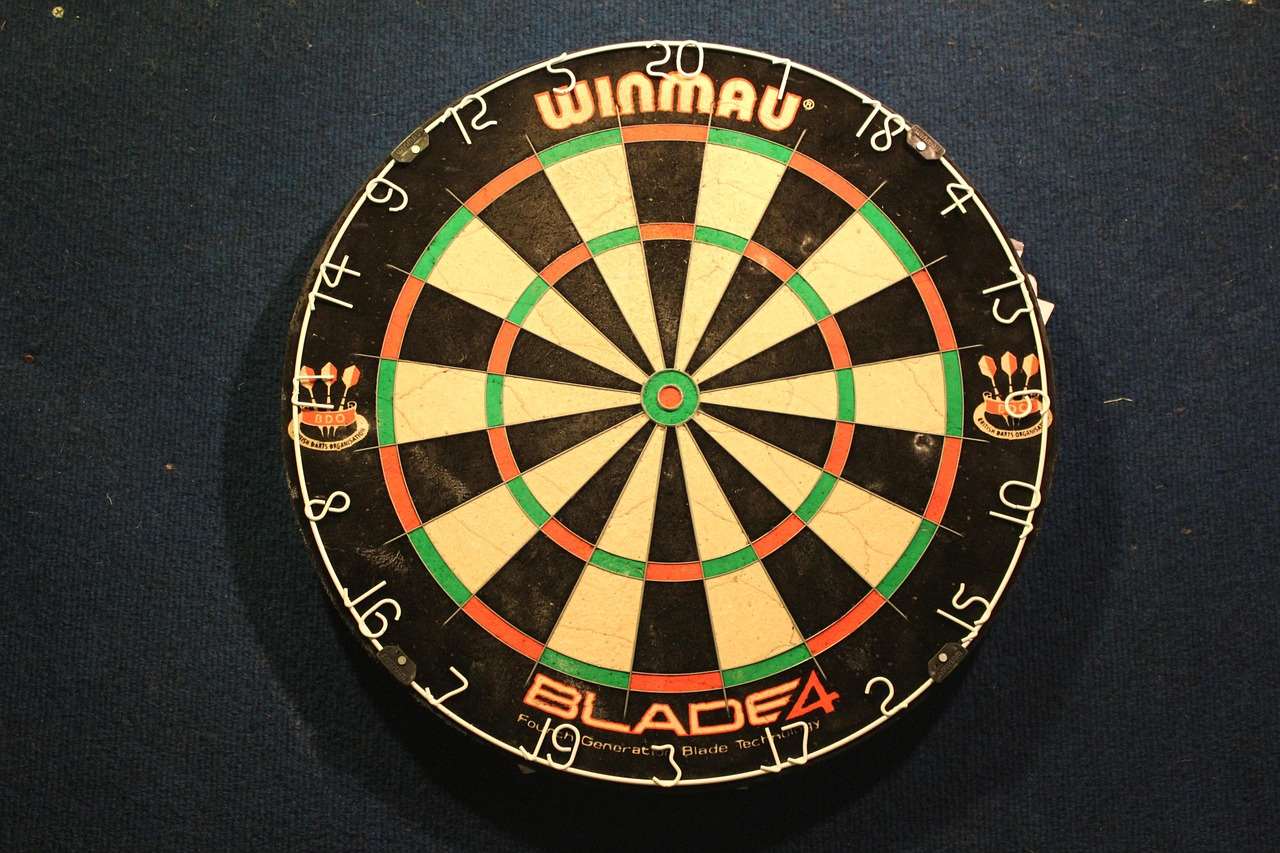Understanding the dart game scoring system is fundamental to enjoying and excelling in this classic pastime; the most common format involves starting at a score of 501 or 301 and strategically reducing it to zero. This article will explore the intricacies of dart scoring, covering various game types, common rules, and helpful strategies to elevate your gameplay.
⚠️ Still Using Pen & Paper (or a Chalkboard)?! ⚠️
Step into the future! The Dart Counter App handles all the scoring, suggests checkouts, and tracks your stats automatically. It's easier than you think!
Try the Smart Dart Counter App FREE!Ready for an upgrade? Click above!
Decoding the 501 Dart Game Scoring System
The 501 dart game scoring system is arguably the most popular format, and mastering it is key to competitive play. Each player begins with 501 points, and the goal is to be the first to reduce that score to exactly zero. This requires not only accurate throwing but also strategic calculation and planning.
Each section on the dartboard is worth a specific number of points. The main sections range from 1 to 20. Landing a dart in these sections awards you that number of points. However, the outer ring of the dartboard represents the **double ring**, doubling the value of the section it occupies. Similarly, the inner ring is the **treble ring**, tripling the score of that section. Finally, the bullseye is worth 50 points, and the outer bull (or single bull) is worth 25 points.
Here’s a breakdown of the key elements:
- Single: Hitting a number in the large area awards the face value of that number.
- Double: Landing a dart in the outer, thinner ring doubles the face value. A double 20 is worth 40 points. Learn more about how it affects your games in darts double or triple.
- Treble: Hitting a dart in the inner, thinner ring triples the face value. A treble 20 is worth 60 points.
- Bullseye: The center of the board, usually red, is worth 50 points.
- Outer Bull: The ring surrounding the bullseye, often green, is worth 25 points.

Calculating Your Score
To calculate your score, simply add up the point values of the darts you throw in each round (three darts per turn). Then, subtract that total from your remaining score. For instance, if you have 201 points left and score a treble 20 (60), a single 15, and a single 10, your total for the round is 85. Subtracting 85 from 201 leaves you with 116 points.
Accurate addition and subtraction are crucial in darts. Keeping track of your score, as well as your opponent’s, will help you make tactical decisions regarding your next throw. Many players find it helpful to use a darts scoring app or a whiteboard to maintain accurate scores.
Variations in Dart Game Scoring Systems
While 501 is the most popular, other dart game scoring systems exist, each offering a unique twist on the classic game. These variations cater to different skill levels and preferences.
301: A Shorter Game
301 is a quicker version of 501, starting with a lower point total. The rules are fundamentally the same, with the goal of reaching zero. Because it’s shorter, 301 is often preferred for casual games or when time is limited.

Around the Clock (or Round the Board)
In this game, players must hit each number on the board in sequence, from 1 to 20. The first player to successfully hit all numbers in order wins. Variations include requiring doubles or trebles for each number, increasing the difficulty.
This game is excellent for practicing accuracy and precision, as it forces you to target specific areas of the dartboard consistently. If you want to practice the throws consider master your throw.
Cricket
Cricket involves a different scoring system altogether. Players aim to “close out” numbers (typically 20, 19, 18, 17, 16, 15, and the bullseye) by hitting each number three times. Once a player has closed out a number, they score points on that number whenever they hit it, as long as their opponent hasn’t closed it out yet. The player with the most points on closed-out numbers wins, provided they have also closed out all required numbers.
Cricket requires both accuracy and strategic thinking. You need to balance closing out numbers for yourself while preventing your opponent from scoring on theirs.
Key Rules and Regulations for Dart Game Scoring
Regardless of the specific game being played, several fundamental rules and regulations govern dart game scoring. These ensure fair play and a consistent experience.
Starting and Ending a Leg
In many variations, particularly 501 and 301, a “double in” rule may be enforced. This means that a player must hit a double to begin scoring points. Similarly, the game typically requires a “double out,” meaning the final dart thrown must land in a double to reach zero. If a player goes below zero or ends on one, the score doesn’t count and it goes to the next round.
The **double out rule** adds a layer of complexity and strategy to the game, as players must set themselves up for a double to finish. Many players use darts checkout tips to improve their scoring.

Busts
A “bust” occurs when a player scores more points than needed to reach zero, or reduces their score to one. In such cases, the player’s score reverts to what it was at the beginning of that round, and the turn passes to the next player. Understanding busts is essential for strategic play.
The Oche (Throwing Line)
The oche is the line behind which players must stand when throwing their darts. The standard distance from the oche to the dartboard is 7 feet 9.25 inches (2.37 meters). Maintaining the correct distance is crucial for consistency and accuracy.
Strategies to Improve Your Dart Game Scoring
While raw skill is important, employing effective strategies can significantly improve your dart game scoring system. These strategies involve a combination of practice, mental calculation, and tactical decision-making.
Aiming and Accuracy
The foundation of good scoring is accurate aiming. Practice throwing consistently at specific targets, focusing on your stance, grip, and release. Aiming for the treble 20 is a popular strategy, as it yields the highest possible score (60 points) with a single dart. Another approach is to use the Automatic dart scoring app which could help in calculating the scores.
Checkout Strategies
Developing checkout strategies is crucial for finishing games effectively. Learn common checkout combinations (e.g., 40 = Double 20, 32 = Double 16) and practice setting yourself up for these finishes. Planning your throws in advance can help you avoid busts and maximize your scoring potential.

Mental Game
Darts is as much a mental game as it is a physical one. Staying calm and focused under pressure is essential. Visualize your throws, maintain a positive attitude, and avoid letting mistakes affect your concentration.
Advanced Dart Game Scoring Techniques
Utilizing the Board Efficiently
Experienced players understand that the entire dartboard is a resource. Don’t just focus on the treble 20. Numbers like 19 and 18, while slightly lower in value, offer more forgiving targets and can be useful for setting up checkouts or avoiding busts.
Strategic Bust Avoidance
Knowing when to switch targets to avoid a bust is a hallmark of a skilled player. If you’re approaching zero and a high score would result in a bust, adjust your aim to a lower-scoring area to maintain control.
Opponent Awareness
Pay attention to your opponent’s scoring and strategy. If they are closing in on a win, you may need to take more risks to catch up. Conversely, if they are struggling, you can play a more conservative game.

Practice and Analysis
Consistent practice is the key to improvement. Track your scores, analyze your performance, and identify areas where you need to focus your training. Experiment with different techniques and strategies to find what works best for you.
The Future of Dart Game Scoring
With the advent of technology, dart game scoring systems are becoming increasingly sophisticated. Electronic dartboards with automatic scoring and online connectivity are transforming the way people play darts, making it more accessible and engaging than ever before.
These advancements allow players to track their progress, compete with others online, and participate in virtual tournaments. The future of darts is bright, with technology playing a key role in its continued growth and popularity. If you have darts board kids can play on, consider an electronic dartboard.
Conclusion
Mastering the dart game scoring system, whether it’s 501, 301, or Cricket, requires understanding the rules, developing effective strategies, and practicing consistently. By learning the intricacies of the board, improving your aiming accuracy, and cultivating a strong mental game, you can elevate your dart skills and enjoy the game to its fullest. So, grab your darts, step up to the oche, and start practicing these techniques to enhance your performance. Now that you have a firm grasp of dart scoring, why not join a local league or organize a friendly competition? Put your knowledge to the test and experience the thrill of victory!
Hi, I’m Dieter, and I created Dartcounter (Dartcounterapp.com). My motivation wasn’t being a darts expert – quite the opposite! When I first started playing, I loved the game but found keeping accurate scores and tracking stats difficult and distracting.
I figured I couldn’t be the only one struggling with this. So, I decided to build a solution: an easy-to-use application that everyone, no matter their experience level, could use to manage scoring effortlessly.
My goal for Dartcounter was simple: let the app handle the numbers – the scoring, the averages, the stats, even checkout suggestions – so players could focus purely on their throw and enjoying the game. It began as a way to solve my own beginner’s problem, and I’m thrilled it has grown into a helpful tool for the wider darts community.